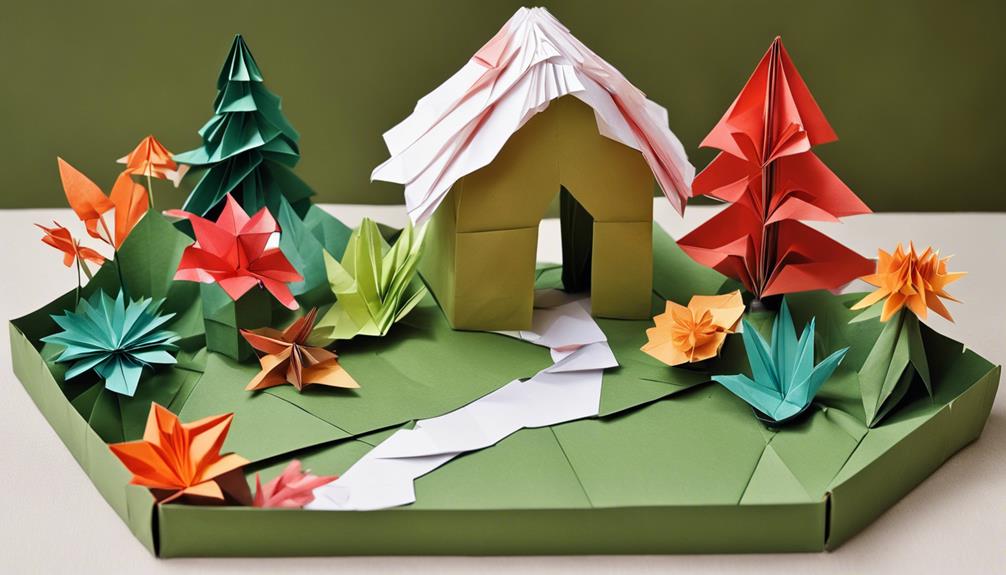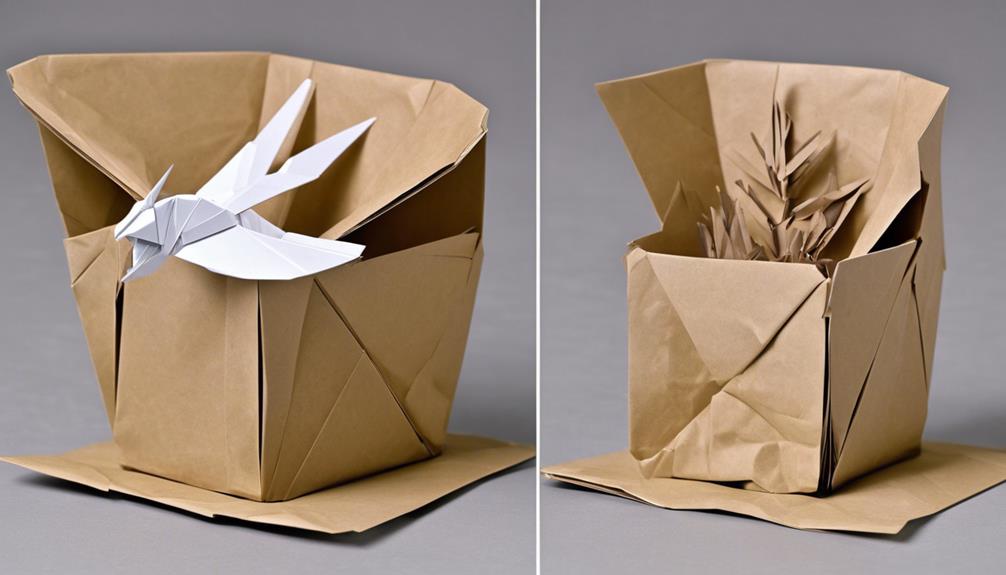When tending to your outdoor green spaces, it's essential to be mindful of potential fire hazards that may arise. From simple tasks like garden maintenance to more complex activities such as outdoor cooking, there are various precautions you can take to ensure the safety of your home and surroundings. By implementing a few key practices, you can significantly reduce the risk of fire incidents in your garden or landscaping area. Stay tuned to discover practical fire safety tips tailored specifically for home gardeners and landscapers.
Garden Maintenance

When maintaining your garden, regularly inspecting and clearing debris is crucial for fire safety. Start by assessing the garden's soil quality through testing. Proper soil testing helps determine the need for nutrients, aiding plant growth and reducing dry vegetation that could pose a fire risk. Additionally, implementing effective pest control measures is essential. Pests can weaken plants, making them more susceptible to diseases that could turn them into fuel for potential fires.
To ensure fire safety, routinely remove dead leaves, branches, and other flammable materials from your garden. Keep your grass trimmed short and maintain a tidy landscape to minimize fire hazards. When conducting pest control, opt for environmentally friendly methods to avoid harmful chemicals that could impact soil quality and plant health. By maintaining healthy soil, controlling pests, and regularly clearing debris, you create a safer environment for your garden, reducing the risk of fires and promoting a flourishing outdoor space.
Equipment Safety
Inspect your gardening tools and equipment regularly to ensure they are in proper working condition and free from any potential hazards. Proper tool maintenance is crucial for both safety and efficiency. Make sure to clean your tools after each use to prevent rust and damage. Additionally, sharpen blades and replace worn-out parts to maintain optimal performance. When operating equipment, always wear appropriate safety gear such as gloves, goggles, and sturdy footwear to protect yourself from injuries.
To further emphasize the importance of equipment safety, here is a table outlining key practices for maintaining and storing your gardening tools and equipment:
| Maintenance | Storage |
|---|---|
| Regular inspections | Proper organization |
| Blade sharpening | Dry storage area |
| Lubrication | Hanging tools |
| Part replacements | Securing loose items |
Remember that proper cleaning of equipment is essential to prevent the buildup of debris or flammable materials. Ensure that all tools are stored in a dry area away from potential fire hazards. By following these practices, you can enhance the longevity of your tools and minimize the risk of accidents.
Proper Waste Disposal

To maintain a safe environment and prevent potential hazards, it is crucial for home gardeners and landscapers to properly dispose of waste generated during their gardening and landscaping activities. Utilizing recycling bins for materials like plastic containers, glass bottles, and metal cans helps reduce waste that could contribute to fire risks. Make sure to sort your recyclables accordingly to maximize their potential for reuse.
When it comes to organic waste such as grass clippings, leaves, and food scraps, consider using composting bins. Composting not only helps in waste reduction but also produces nutrient-rich soil that can benefit your garden. Remember to avoid composting items such as meat, dairy, or oily foods that might attract unwanted pests.
Emergency Preparedness
Before an emergency strikes, make sure you have identified evacuation routes from your home and garden. Additionally, keep a list of emergency contact numbers handy for quick access. Being prepared beforehand can help you act swiftly and stay safe during unexpected situations.
Evacuation Routes
When creating evacuation routes for your home garden or landscaping area, prioritize clear paths that are easily accessible and well-marked for quick and safe evacuation in case of emergencies. Ensure that all family members or workers are familiar with these routes and practice using them regularly. Keep pathways free from obstacles like overgrown plants, tools, or debris that could impede a swift exit. Consider multiple exit options in case one route is blocked. Make sure that emergency procedures are clearly outlined and posted in visible areas near the exits. Regularly review and update these evacuation plans to account for any changes in your garden or landscaping layout. Your safety and the safety of others are paramount in emergency situations.
Emergency Contact Numbers
Ensure you have readily accessible emergency contact numbers saved in your phone or written down in a visible location to swiftly respond to any unforeseen incidents during your gardening or landscaping activities. In case of emergencies like a fire, it is crucial to have the right contacts at your fingertips. Make sure to include numbers for local emergency services, your nearest hospital, and a trusted friend or family member who can assist you during such times. Having these numbers readily available can help you act promptly and efficiently, ensuring the safety of yourself and others. Remember, being prepared is key to handling emergencies effectively, just like having a fire extinguisher and conducting fire drills regularly.
Fire-Resistant Plants

Selecting fire-resistant plants for your garden is crucial in reducing the risk of fire hazards and creating a safer outdoor environment. When choosing plants for landscaping design, opt for those with high moisture content and low flammability to help prevent the spread of fires. Additionally, proper soil preparation and watering techniques can further enhance the fire resistance of your garden.
To assist you in selecting suitable fire-resistant plants, here is a table outlining some options:
| Plant Type | Fire-Resistance Level | Maintenance Requirements | Best Growing Conditions |
|---|---|---|---|
| Aloe Vera | High | Low | Sunny areas, well-draining soil |
| Lavender | Moderate | Low | Full sun, infrequent watering |
| California Lilac | High | Low | Sunny locations, well-drained soil |
| Red Yucca | High | Low | Full sun, drought-tolerant |
Safe Outdoor Cooking
When it comes to safe outdoor cooking, you need to pay attention to outdoor grill safety, taking precautions around fire pits, and setting up your cooking area properly. Make sure your grill is placed away from flammable materials and never leave it unattended while in use. Always have a fire extinguisher nearby and follow the manufacturer's guidelines for safe operation.
Outdoor Grill Safety
To ensure safe outdoor cooking on your grill, always thoroughly inspect the propane tank and connections before use. Proper maintenance is crucial for grill safety. Here are three essential tips:
- Check for Leaks: Before firing up the grill, perform a leak test on the gas tank and connections. Apply a soapy water solution and look for bubbles, indicating a leak that needs immediate attention.
- Keep a Fire Extinguisher Handy: Accidents can happen, so have a fire extinguisher nearby when grilling. Make sure it is suitable for grease fires and know how to use it effectively.
- Clear Surroundings: Position your grill in an open area away from any flammable materials, such as overhanging branches or dry leaves, to prevent potential fire hazards.
Fire Pit Precautions
Inspecting your fire pit before each use is essential to ensure a safe outdoor cooking experience. Proper fire pit maintenance and safety precautions can prevent accidents. Check for any cracks in the fire pit bowl or base, as these could lead to structural issues during use. Ensure the area around the fire pit is clear of flammable materials and that it is placed on a non-combustible surface. Follow local regulations regarding fire pit design and placement to avoid any legal issues. Regularly clean out ash and debris to prevent buildup, which can be a fire hazard. By taking these fire pit precautions seriously, you can enjoy your outdoor cooking activities without worry.
Cooking Area Setup
Ensure a safe outdoor cooking experience by carefully setting up your cooking area following these essential guidelines.
- Fire extinguisher placement: Always have a fire extinguisher within reach of your cooking area. Ensure it is in good working condition and everyone knows how to use it in case of emergencies. Safety precautions are key to preventing and managing potential fires.
- Proper ventilation: Position your cooking area in a well-ventilated space to prevent the buildup of smoke and gas. Adequate ventilation not only enhances the cooking experience but also reduces the risk of inhaling harmful fumes. Prioritize proper ventilation for a safer cooking environment.
- Cooking safety: Practice safe cooking habits by keeping flammable materials away from cooking equipment, monitoring open flames, and never leaving the cooking area unattended. Prioritize cooking safety to prevent accidents and ensure a worry-free outdoor cooking experience.
Regular Inspections
Regularly checking your garden and landscaping features can help prevent fire hazards and ensure a safe environment for you and your family. Creating an inspection checklist will assist you in systematically assessing potential risks. Start by examining your outdoor electrical outlets and equipment for any signs of wear or damage. Ensure that all wiring is intact and free of fraying. Inspect your barbecue grill for grease buildup and make sure it is clean before each use. Check that your gardening tools are properly stored and not at risk of causing sparks. Regularly clear away dry leaves, branches, and other combustible materials from your yard to reduce the risk of fire spreading. Keep a fire extinguisher easily accessible and ensure that everyone in your household knows how to use it. By conducting routine inspections and staying vigilant, you can proactively detect fire hazards and maintain a safe outdoor space for relaxation and enjoyment.
Frequently Asked Questions
Are There Any Specific Fire Safety Precautions to Take When Using Power Tools in the Garden or on the Lawn?
When using power tools in the garden or on the lawn, it's crucial to prioritize safety precautions. Always wear appropriate safety gear like goggles and gloves. Keep cords away from water sources and inspect them for damage before use. Ensure your outdoor furniture is protected from sparks or debris by placing it at a safe distance. Taking these steps can help prevent accidents and keep you safe while working with power tools outdoors.
How Can I Protect My Outdoor Furniture and Structures From Catching Fire During a Garden Party or Barbecue?
So, you want to make sure your outdoor furniture and structures don't turn into a bonfire during your garden party or barbecue? Smart move! Start by keeping a safe distance between your seating and any fire pits. Consider fire-resistant patio decor and regularly check for any flammable materials nearby. It's all about fire prevention to keep the good times rolling without any unexpected flames crashing the party. Stay vigilant and enjoy your outdoor gatherings worry-free!
Is It Important to Have a Fire Extinguisher Specifically for Outdoor Use in Case of a Fire in the Garden or on the Lawn?
Yes, it's crucial to have a fire extinguisher for outdoor use when enjoying your garden or lawn. It's essential for outdoor cooking safety and fire pit maintenance. Additionally, a garden hose can be handy for quick action. Remember to have an emergency evacuation plan in place. Being prepared can help you enjoy your outdoor gatherings with peace of mind, knowing you have measures in place to handle potential fire incidents effectively.
What Should I Do if I Notice a Neighbor's Garden or Yard Is Not Maintained Properly and Poses a Fire Risk?
When spotting a neighbor's garden or yard with fire hazards, it's crucial to address the issue promptly. Start by initiating neighbor communication in a non-confrontational manner. Express concerns politely, focusing on community awareness and risk prevention. Suggest solutions together, such as clearing dry vegetation or installing fire-resistant landscaping. By taking action and fostering a sense of shared responsibility, you contribute to a safer environment for all.
Are There Any Special Considerations for Fire Safety When Using Outdoor Lighting or Decorative Elements in the Garden or on the Lawn?
When it comes to using outdoor lighting and decorative elements in your garden or lawn, there are some special considerations for fire safety. Make sure to keep all lighting fixtures away from flammable materials like dried leaves or overhanging branches. Also, be cautious with fire pits, ensuring they are placed on a non-flammable surface and a safe distance from any structures. Regularly check for frayed wires or damaged equipment to prevent any potential fire hazards.



